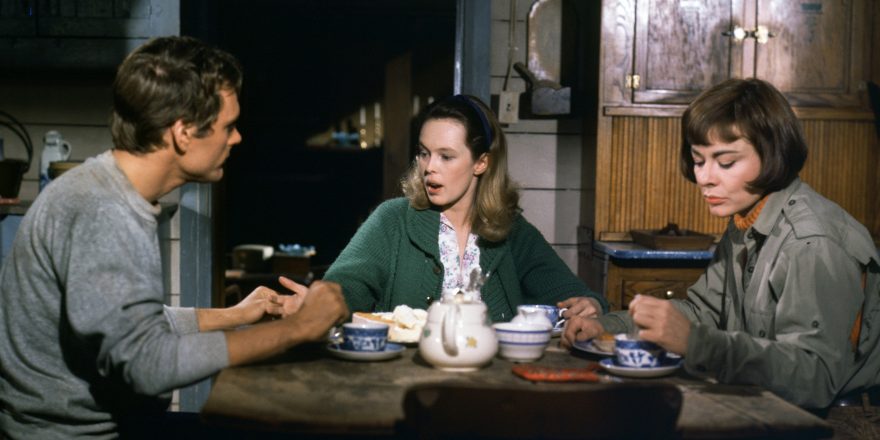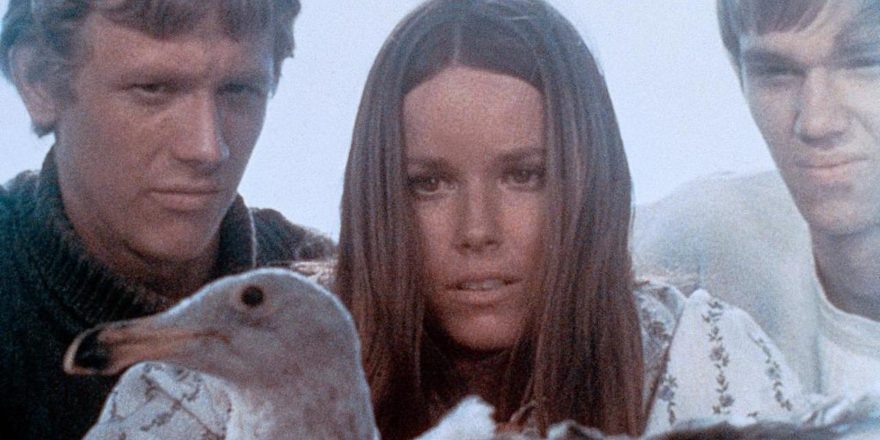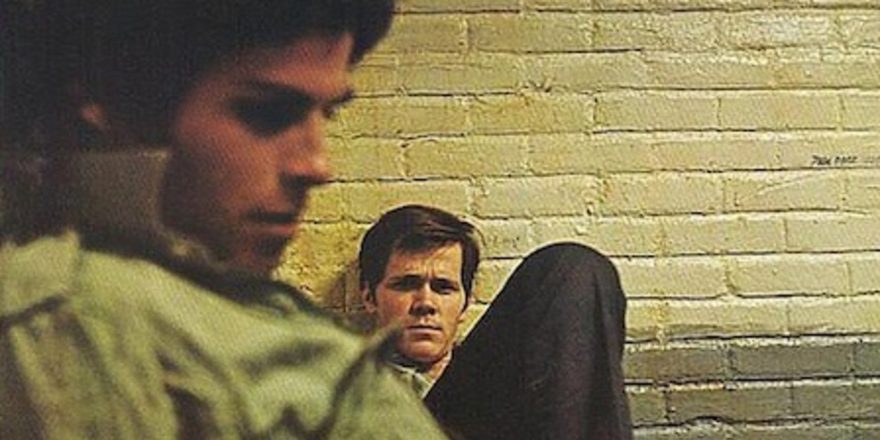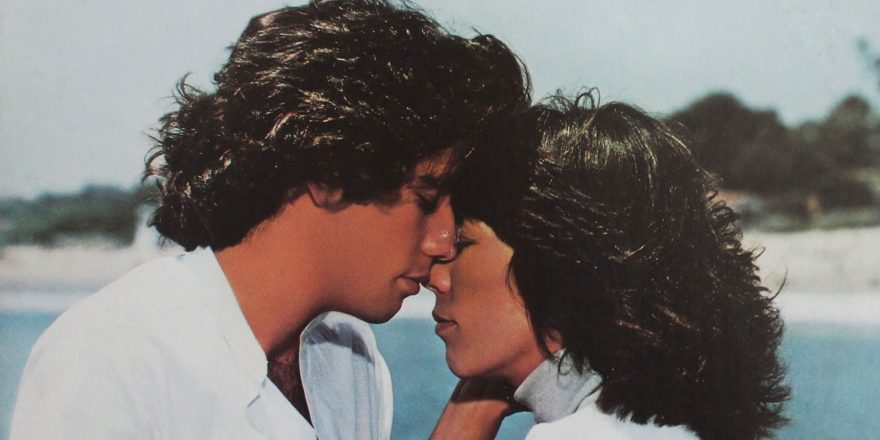Although Vito Russo’s 1981 book The Celluloid Closet is useful as a fairly encyclopedic investigation into the representation of gays and lesbians in cinema, its underlying agenda – to police said representation in popular culture – is highly dubious. Russo was the co-founder of GLAAD (Gay & Lesbian Alliance Against Defamation), an organization which has gone so far as to attempt to enact pre-censorship of Hollywood movies – intervention at the scriptwriting stage to control how gays and lesbians are represented – a practice that radically misinterprets the function of cinema. (In the late seventies and into the eighties, Russo and Village Voice writer Arthur Bell actually encouraged gays to disrupt the shooting of films perceived as being potentially homophobic – Cruising being the most high-profile instance – a bit of neo-Stalinist interference that laid the groundwork for today’s censorious left.) Cinema, and art in general, should never be solely prescriptive – dictating to the populace how gays and lesbians should be perceived, i.e., in a positive light (who dictates what constitutes a “positive” representation is part of the problem), but it can be descriptive – describing how homosexuals are perceived in culture, and articulating the zeitgeist with regard to their representation. Insisting on purely positive – or purely negative – representation is tantamount to propaganda. Homophobic or “negative” portrayals of gays and lesbians in the movies may not be pleasant, but they do serve a function: to gauge and interpret the popular conception of homosexuality. Positive portrayals are, of course, welcome, but again, who decides what is a positive portrayal, and do we really want a blinkered, censored version of how these subjects are commonly perceived? In an era in which the established left is far too eager to naively enact censorship, police language and desire, and insist upon a whitewashed world of homosexual representation strictly along ideological lines, it’s crucial to delve deeper into a work of art and explore the nuances beyond an oversimplified, knee-jerk reaction to a film or work of literature.
Russo famously wrote that in Mark Rydell’s The Fox, an adaptation of the D.H. Lawrence novella, “lesbianism loses.” This is a totally reductive analysis of the film, and one that ignores the literary complexity of the original source material. In fact, what’s extraordinary about the D.H. Lawrence work, published in 1922, is how sanguine and forward-thinking the portrayal of the lesbian couple is for the era, and how sinister and predatory the heterosexual male – the symbolic fox – who disrupts their henhouse. “Don’t talk to me about nature,” says Jill Banford resolutely in the novella, the character played by Sandy Dennis in the film. The work is all about the two female characters, clearly in a closeted lesbian relationship, struggling against nature, both in their hardships on the remote farm where they live, and with their sexuality. As for Paul (Keir Dullea in the film), Lawrence writes of his attraction to March, Jill’s female lover (Anne Heywood in the film): “Her figure, like a graceful young man’s, piqued him.” The more butch March has a distinct masculine appeal, and one that, evidently, brings out the latent homosexuality in Paul. For a three-hander, it’s a remarkably complex, psychosexual set-up, which both novella and film deeply mine. When Paul finally seduces March, it is not presented as some triumph of heterosexual masculinity over lesbianism, but as pure horror. “But she had no breath to speak,” Lawrence writes, “It was if she was killed.”
The film version of The Fox (1967) starts out with a series of shots of static, snowbound landscapes around the farm, ending with the fox’s POV invading the henhouse. March shoots at the predator, but misses, setting up the over-determined symbolism that characterizes both the novella and its cinematic adaptation. They talk soon after about the old tree by the house whose roots are dying, but which Jill insists is still alive and refuses to have chopped down, another central symbol that is only introduced toward the end of the novella. Jill is the femme in the relationship, fussing in the kitchen while March rests her big boots on the table. Jill gives her a “rub,” passively catering to her taciturn lover who does most of the outdoor chores on the farm.
While the lesbian sexuality of the female lovers is mostly suggested in the novella, the film makes it quite explicit. After her rub, March retreats alone to the bathroom and looks at her naked body in the mirror, rubs lotion on her skin, dims the light, and masturbates. March is a deeply narcissistic character, as evinced by this scene, and the subsequent one in which she looks at her reflection in the river, like Narcissus, and feels her breasts. She then looks up to lock eyes with the wily fox that stares her down, a foreshadowing of the intrusion of the intimidating male character that will soon shatter their almost idyllic relationship. When their cow, Eurydice (another Greek reference not found in the novella), escapes, Jill and March chase her, ending up in a lovely, romantic snowball fight. But the scene ends in a still frame, turning to red, a portent of the violence to come.
Enter Paul, lurking outside like the fox before entering the house and examining the women with his deep green, penetrating “pellucid” eyes (as Lawrence describes them). The house had formerly belonged to his grandfather, who has died and sold it since his absence in the navy. Paul (like Dullea) is Canadian, often symbolic in literature of vast wilderness and untamed nature. Dullea seems somewhat benevolent at first, but eventually turns menacing, much like his character two years earlier in Preminger’s Bunny Lake is Missing, another film about a character stealing a female loved one away from her caretaker (in that instance, her mother). Paul sneakily ingratiates his way into Jill’s good graces, and she invites him to stay with them, much to the consternation of March, who, staying in the shadows, smells what is afoot. Soon enough, Paul confronts March in the barn and tells her he wants to marry her, coercing her to say yes. Jill clues in to what is going on between them, and, in bed with March, declares, “It’s time he was out of here.” The next day, Paul becomes even more aggressive, asserting to Jill, “I think you and Miss March should have rooms of your own” before declaring that he and March are going to be married. Jill finds the idea absurd, and calls him a drifter.
The following sequence intercuts shots of Paul and March both chopping firewood, paralleling their masculinity, and reinforcing the homoeroticism latent in their relationship. After Paul overhears them arguing about him, he goes to the drastic measure of chopping off a chicken’s head in the dead of night and spreading the blood around the barn to attract the fox (a graphic scene not found in the novella). Paul shoots the fox, then brandishes it at the two women who look down on him from their bedroom window. The next day he shows the carcass to March, who is deeply impressed by it. Later, Paul menacingly cleans his phallic gun by the fire as Jill informs him that if they get married they can’t stay with her on the farm, and offers to pay him to leave March alone. But Paul cannot be dissuaded. “I want her. That’s all. I’m going to take her.” Paul’s rapey presence codifies the brute, amoral masculinity of the wild, as opposed to Jill, who represents a more civilized, domesticated struggle against nature.
A significant scene, also in the novella, has March descend from upstairs wearing a salmon pink dress. It’s a shock to see the butch March in feminine attire, almost as if she’s in drag. The gesture invigorates the subtext of the situation, and underlines her ambivalence: she’s in love with Jill, but Paul electrifies her sexually. Her fluid sexuality is the lynchpin of the film, breaking down the barriers between strict gender identification. Putting a coat over her dress, Paul takes her out to a nearby shed and finally makes love to her, while Jill runs futilely through the forest, ending up on her knees, alone and crying, a most sad and forlorn scene.
The next day, March sees Paul off at the train station, then returns to the farm to be confronted by the fox’s pelt nailed to the barn. She is consistently paralleled with the fox, even visually as a mirror image, having been “killed” by the male hunter/drifter. After a few days, she enters the bedroom to comfort the inconsolable Jill, who has been confined to bed, and confesses that she was happy living with her. For the first time, they kiss like real, passionate lovers. A montage of them having fun together follows, in which March tells her that she doesn’t love Paul and won’t marry him, and that she “knows herself” with Jill, suggesting her lesbianism is part of her true nature.
The infamous finale of the film, which caused Russo and his ilk so much consternation, involves the symbolic tree, the still-living monument of nature whose roots have died, a metaphor for their previously dying relationship of the women. Paul returns, conveniently, just as Jill and March are finally chopping down the tree. (A visit by March’s parents at this stage, significant in the book, is elided in the film.) Paul helpfully offers to cut down the tree for them, his masculine brio more suited to the difficult task. “I think you better move, Miss Banford,” he says to Jill, to which she replies, “If you’re going to do it, just go ahead and do it!” The tree, of course, falls the wrong way and lands on Jill, killing her instantly, caught dead in another freeze frame. Her death is much gorier in its description in the novella, and postulated more as if it were a deliberate act by Paul; the film makes the circumstances of her death more ambiguous. In the novella, Lawrence writes, “Sometimes he thought bitterly that he ought to have left her. He ought never to have killed Banford. He should have left Banford and March to kill one another.” In the film, it seems almost as if Jill wants him to kill her, that she is tired of fighting her enormous battle against nature, and against her masculine foe.
Russo would have you believe that “lesbianism loses,” but indeed, in terms of the tone and character identification of the film, the tragedy and horror of Jill’s death very much emphasize how idyllic, romantic and preferable the life of the two women together was. The Fox ends with March returning to the farm with Paul to finalize its sale and leave with a few belongings. She sits by a window in the house as the rain pours down, reflected on her face, a pathetic fallacy. Before getting in the car to leave with Paul, she stops to look for the last time at the farm where she was so happy with her forbidden lover. The camera slowly pans over from the car driving away to the final, shattering image of the film: the fox’s pelt, with its dead eyes and icicles hanging from its mouth, nailed to the barn, accompanied by Lalo Schifrin’s jarring music, more suitable here for a horror movie. Indeed, this last shot identifies the entire proceedings as a kind of horror film, one in which an innocent, loving lesbian relationship has been destroyed by a predatory antagonist, March having been forced to submit, ultimately, largely against her will, to the male heterosexual monster, and to conform to the rules of society. Yes, the lesbian does die at the end of the movie, but it’s a devastating, tragic death, and one that speaks volumes about the historical tribulations of homosexuals living in a straight world.






